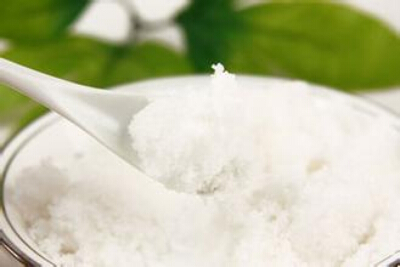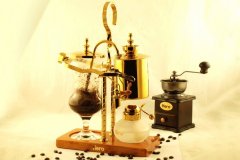The sugar commonly used in drinking coffee explains all kinds of sugar in detail.

The role of sugar in coffee is mainly to neutralize bitterness by increasing sweetness. General coffee drinks with a sweetness of 12% to 14% will make people feel less bitter. And more than 18% will make people feel a little tired of sweetness. There are subtle differences in the taste of coffee when different sugars are added to it. Here's what I'll introduce:
White sugar (sucrose)
At present, white granulated sugar is the most common sugar for drinking coffee in China. Because of its sweetness and less miscellaneous flavor and impurities, the sugar packet is generally white granulated sugar.
Yellow sugar
Yellow sugar is actually a kind of brown sugar, the raw material is the same as white granulated sugar, is also sugar cane, but because the production process is relatively complex, so the price is much more expensive than white granulated sugar. Brown sugar is also a kind of sugar that foreigners prefer to add coffee. Coffee shops generally have white sugar bags and yellow sugar bags, and the weight of yellow sugar bags is generally lighter than that of white sugar bags.
Brown granulated sugar
Brown sugar is rarely used in coffee because of its high content of impurities.
Cotton white sugar
The raw material of cotton white sugar is beet, so the taste will be a little different from white granulated sugar. According to my personal test, cotton white sugar is better than white granulated sugar in making sugar oil, but there will be some impurities that need to be filtered.
Fructose
The fructose used in coffee shops is generally liquid, mainly used in iced coffee, but I personally do not recommend fructose. Although fructose sounds healthy and natural, in fact, fructose in the industrial processing process will produce some substances that the human body cannot metabolize, so I still recommend using sugar oil made from white granulated sugar or cotton white sugar when making iced coffee.
Sugar substitute
Sugar substitute is actually saccharin, which is specially prepared for people with diabetes. People without diabetes are not recommended to use it. The sweetness after blending into coffee is more strange and more similar to sweet taste. The above are the common sugars in drinking coffee. Choosing the right sugar and putting in the right amount will not only increase the taste of coffee, but also be more beneficial to your health.
Important Notice :
前街咖啡 FrontStreet Coffee has moved to new addredd:
FrontStreet Coffee Address: 315,Donghua East Road,GuangZhou
Tel:020 38364473
- Prev

A variety of coffees and seasonings
With the development of flavored coffee in the early 1980s, more and more coffee condiments appeared. Traditionally, Turks add spices to coffee, and now caramel Marchiato has become a model of flavor coffee. At present, in addition to traditional spices, flavor syrup is commonly used to add flavor coffee. Syrup of all flavors, all kinds of
- Next

How to use the Royal Coffee Pot in Belgium
Because of its ingenious design and ingenious use of gravity balls and levers, the Royal Belgian coffee pot makes the extraction of the whole coffee a very interesting mechanical automation. this is precisely the charm of this coffee pot that makes the process more enjoyable than the final result. Due to the differences in the specifications of different types of pots, it is difficult to set a standard quantity, but generally
Related
- Beginners will see the "Coffee pull flower" guide!
- What is the difference between ice blog purified milk and ordinary milk coffee?
- Why is the Philippines the largest producer of crops in Liberia?
- For coffee extraction, should the fine powder be retained?
- How does extracted espresso fill pressed powder? How much strength does it take to press the powder?
- How to make jasmine cold extract coffee? Is the jasmine + latte good?
- Will this little toy really make the coffee taste better? How does Lily Drip affect coffee extraction?
- Will the action of slapping the filter cup also affect coffee extraction?
- What's the difference between powder-to-water ratio and powder-to-liquid ratio?
- What is the Ethiopian local species? What does it have to do with Heirloom native species?

